Vicky and Christo Kovachev and their two daughters Daisy, five, and Nella, two, have discovered how to have a lot of fun in a very small space.
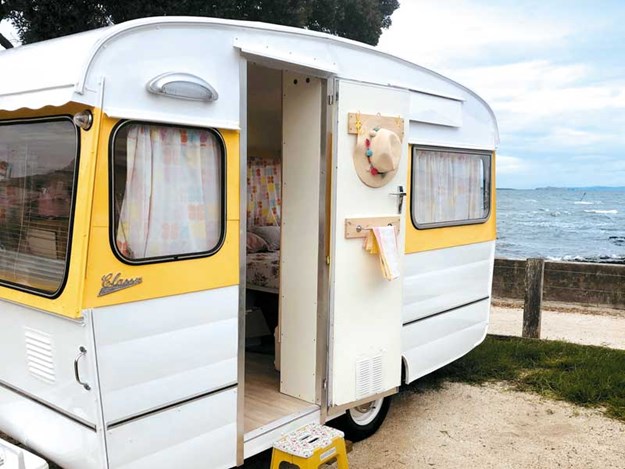
Holidaying in their vintage mobile home is a memorable family time, and now that the diminutive Classic caravan is refurbished, fellow campers won’t forget it in a hurry either.
Before buying the caravan, what camping had you done?
We were not new to camping. We’d done a lot of tenting, starting off with a very small tent which every year was replaced by one that was a bit larger.
Why did you decide to buy a caravan?
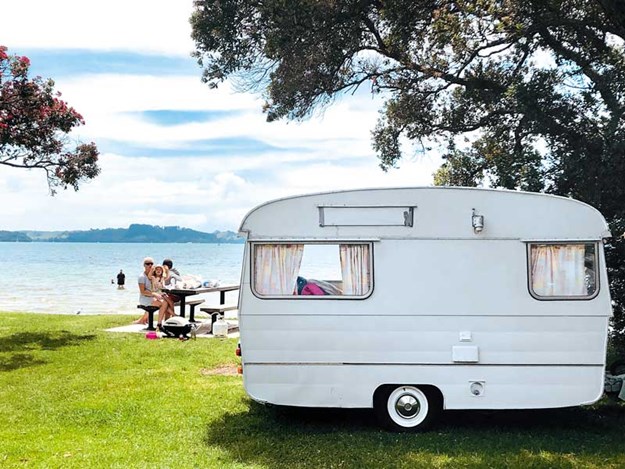 |
The Classic needed work, but was in pretty good shape for an original |
Vicky had always wanted one because she had fond memories of family caravan holidays as a child in England. We knew in the back of our minds that we would own a caravan one day.
We kept browsing but without much intent until, one day, we spotted this lovely little Classic, just four metres long, on the internet. It was at Scotts Landing and we hopped in the car and went to have look. “Sold,” said Vicky, the minute she laid eyes on it. It cost $4700.
Perhaps we were lucky that, as far as we could tell, it was it in reasonably good shape for an original. Classics were sturdily built by Hurst brothers of Levin, this one in 1971.
I believe they were the first caravan builders in the country. The brothers, Claude and Reg, owned a service station in Waikanae and in 1948 they began building their first caravan as a hobby.
It was the beginning of a burgeoning business which they soon moved to Levin. Hurst Brothers became a leading New Zealand caravan manufacturer and remained so for
many years.
How did you use your purchase?
We bought it seven years ago and for the next five years parked it at home and used it as it was. We also did some travelling around the North Island. As the family expanded, we added a dome, and with that combination we felt we were in a palace.
Why did you undertake a restoration?
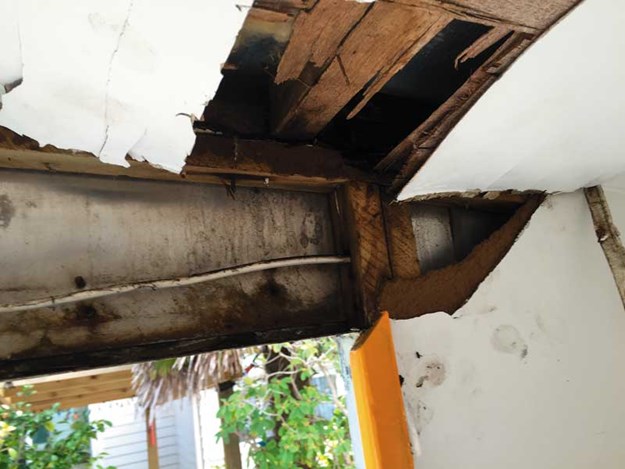 |
Some of the timber frame was rotten |
The caravan developed a leak in one corner of the roof due to water getting in through nail holes. Back when it was made, they didn’t use stainless-steel screws and some of them had rusted out. Christo started peeling back the ceiling to fix it and then, although we didn’t intend to, we just kept going.
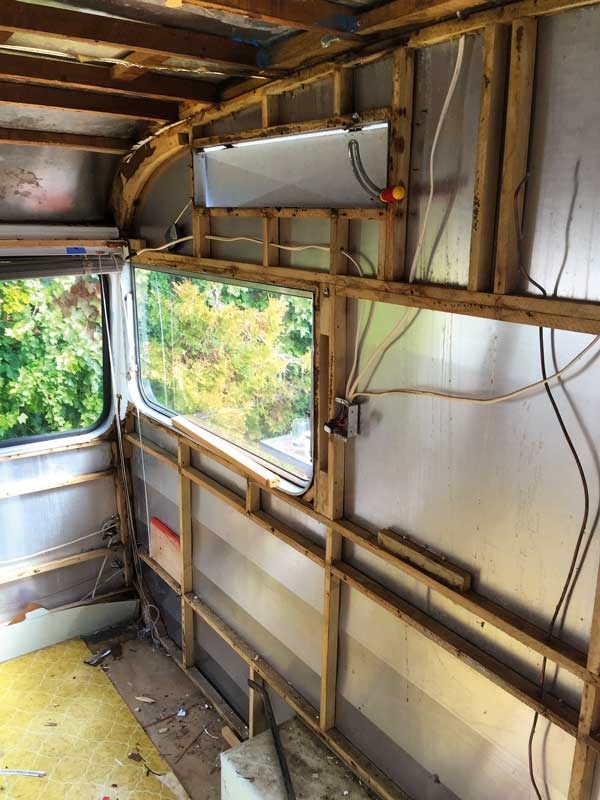 |
The interior had to be stripped right back |
We looked at the mess and then at each other and said, ‘What have we done?’It is as well we did that as some the framing timber was rotten so we stripped it right back to the aluminium cladding. We were lucky that the chassis was fine and most of the rust was surface.
How did you make progress from there?
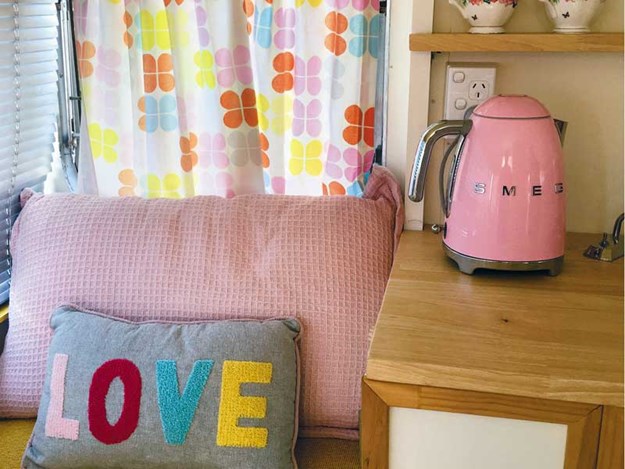 |
There are pretty flourishes throughout |
Christo did most of the work. His work is technical imaging but he is also a bit of a handy man. I run a vintage china company called Vintage Daisy China Hire, and the caravan’s décor was my forte.
I made things look pretty. Christo started by replacing the framing with hardwood. The lining and cupboards and everything else is marine plywood.
How long did it take?
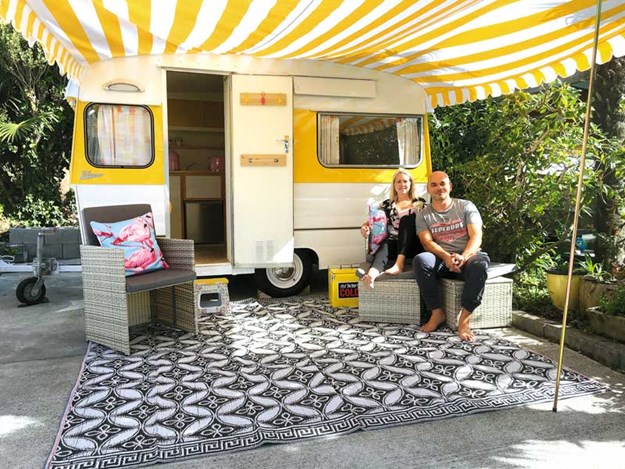 |
The cheerful yellow awning has greatly increased the living space |
About two years. It was a massive learning curve. Christo spent a lot of time researching how to do things because we wanted to keep it as authentic as possible. Many nights we were out there in the yard when the children were asleep.
Luckily, we both love tinkering and (mostly) it was enjoyable. We reconfigured the beds. It was a twin bed and we made it into one good sized double and a single.
We didn’t have to replace the floor. The original water tank is now the wastewater tank and fresh water is stored in a jerry can.
What were the costs like?
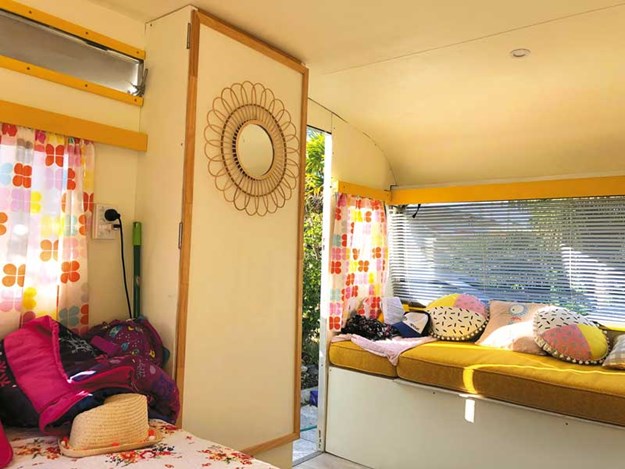 |
New squab upholstery was one of the more expensive items |
All up it cost us $7000 for the restoration. We repurposed anything we could, but had to outsource the exterior painting and the new squab upholstery. They were the most expensive items.
From your experience, what advice can you give others?
Understand that an exercise like this is going to be challenging. A lot of the work was intricate, and everything is in a very small space that has a lot of curves.
It took us hours and hours. Christo is tenacious and always follows things through. Even so, he needed a lot of patience. It was invaluable, for instance, to have a friend who helped him with waterproofing the windows and knew what sealant to use between aluminium and wood.
Christo not only researched meticulously but also talked to a lot of skilled people who could give him advice. Research is everything. You need to be a bit of a handyman to start with and enjoy solving problems. It’s a labour of love for sure.
Is it now complete?
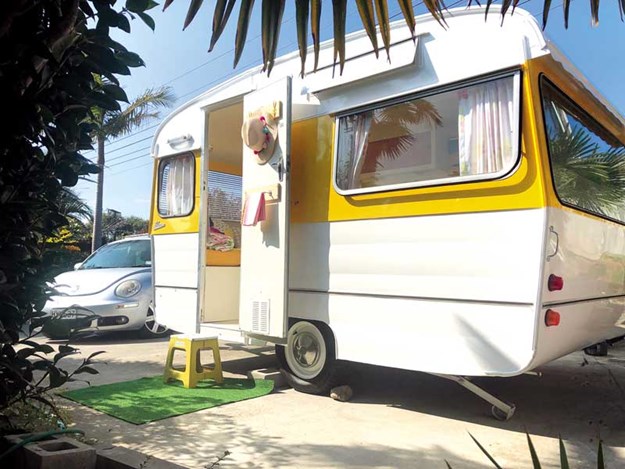 The Classic gets a lot of attention wherever it goes The Classic gets a lot of attention wherever it goes |
As we said, the process is addictive. We’ve just had an awesome awning made to extend the living space. We also installed a solar panel on the roof. There is a space in the existing settee that will be able to accommodate a toilet, and after we’ve done that we’ll go for self-containment so we can camp in more places.
Looking back, has it been worth it?
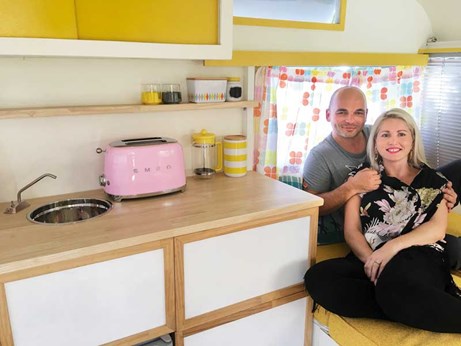 |
All the couple’s hard work has paid off |
We are thrilled with the result. Creating something like this by ourselves is very satisfying. The Classic gets a lot of attention wherever we take it. But it’s not just the end product that is rewarding; the process was really absorbing and pleasurable. If you asked us if we would do it again, the answer would be a definite yes.





